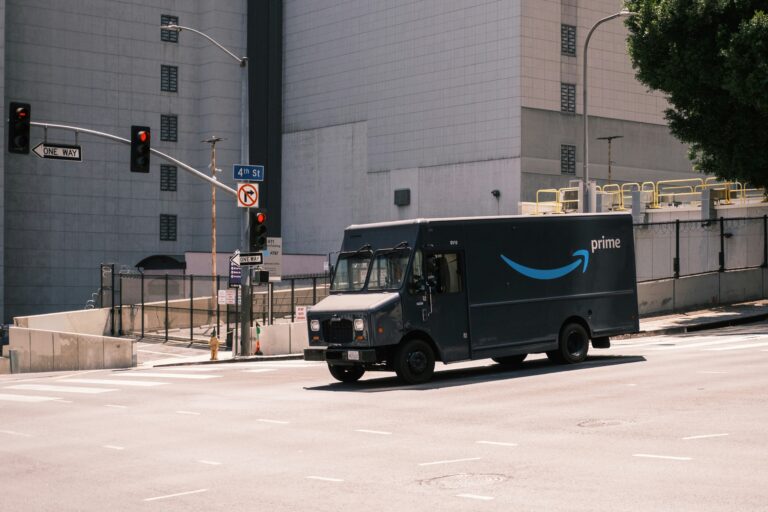The 2014 congressional elections do not take place until November, but unions have already provided millions of dollars in campaign contributions to candidates, political parties, and outside groups – including to some surprising recipients. According to the nonpartisan Center for Responsive Politics, which counts all donations from political action committees (PACs), individual contributions of more than $200 to federal candidates and parties, and “donations from individuals, PACs and other organizations . . . to outside interest groups that report to the Federal Election Commission,” five of the top ten overall donors in the 2014 election cycle have been labor groups, edging out even some of America’s largest corporations like AT&T, Lockheed Martin, and Comcast.
Which unions are the biggest donors? The National Education Association (NEA), the fourth biggest overall contributor, leads the way for labor with $6,877,977 in contributions. They are followed by the Carpenters and Joiners Union at $4,981,217, the American Federation of State, County and Municipal Employees (AFSCME) at $3,130,875, the AFL-CIO at $2,543,200, and the International Brotherhood of Electrical Workers (IBEW) at $2,004,185. Two other unions are also in the top twenty: the Operating Engineers Union comes in at number 13, with $1,617,983 in donations, and the Laborers Unions is ranked 20th, with $1,431,600.
Even in the post-Citizens United environment – in which presidential and congressional campaigns, political parties, and PACs spent $7 billion in the 2012 election cycle – over $22 million from top labor organizations is significant, particularly in a midterm election that does not feature a presidential race. For context, according to data compiled by experts at the Brookings Institution and the American Enterprise Institute, the average winning congressional candidate in 2012 spent approximately $1.6 million – “a 344% increase since 1986” – with incumbents typically outspending their challengers $1.7 million to $587,000. Put simply, despite the conventional wisdom that the political power of unions is dwindling due to declining membership, this level of political giving ensures that they still remain a major force in electoral politics.
In fact, the data on labor donations challenges another piece of conventional wisdom: that unions solely support Democrats, especially at the national level. The numbers from the Center for Responsive Politics illustrate that unions direct a notable amount of donations to congressional Republicans. For example, the largest union giver, the NEA, donated $15,000 to the National Republican Senatorial Committee and another $15,000 to the National Republican Campaign Committee – the official Republican Party entities charged with winning seats in Congress. The NEA has also donated $1,000 each to Senators Lindsey Graham and Jerry Moran, both Republicans, and between $500 and $4,000 to 19 House Republicans. This support may seem surprising considering the hostility toward unions, particularly public sector unions, expressed by leading Republicans in recent years. As one article put it, “House Republicans are ready for war against public sector unions,” and Senator Graham himself has called the NLRB, typically seen as an ally of labor, “the Grim Reaper of job creation.” The NRCC itself has criticized the NEA as a “well-funded liberal special interest[]” that is part of a Democratic establishment that has spent millions to “save their pawn[s]” in congressional races, and the NEA has given Senator Graham grades of D, F, and F in the past three congresses, respectively. Interestingly, it is difficult to find any public materials from the NEA explaining their support of the Republican campaign committees or officeholders like Graham (while both the NEA and some Republicans have recently criticized the Obama Administration’s approach to Common Core education standards, the NEA has been donating to Republicans for the past several election cycles, before Common Core emerged as such a polarizing issue).
Yet, the NEA is not alone among unions in supporting congressional Republicans. For example, the individual candidate who has received the second most funds from the AFL-CIO is Congressman Michael Grimm, a Republican from New York, and 19 percent of all AFL-CIO donations to candidates and parties went to Republicans. Additionally, the Carpenters and Joiners Union has given $242,500 to House Republicans, including $5,000 each to prominent conservatives like Congressman Paul Ryan and Congressman Fred Upton. Although Ryan has had a relatively positive relationship with building trades unions in his home state of Wisconsin throughout his career, he came out strongly against public sector unions there in 2010 and ran for Vice President in 2012 as the running mate to Mitt Romney, who spent much of the primary season “ripping labor unions at every turn.” According to Mark Reihl, the executive director of the Wisconsin State Council of Carpenters, “We don’t agree with [Ryan] on all issues…but we have a working relationship on the primary issue of importance to us . . . He’s supported us on every Davis-Bacon vote that’s been held out there.” As a result, the Carpenters and Joiners Union and the Operating Engineers, “an AFL-CIO affiliate closely tied to the home and road construction industries,” have consistently supported Ryan over the years. By contrast, according to the executive director of an AFSCME chapter in Ryan’s district,”We support truly nothing the guy says or does . . . His whole stance on health care, Medicare, Medicaid, government funding of social services—every ultra-conservative position has been articulated by Paul Ryan.”
To be sure, the vast majority of labor donations still go to Democrats and Democratic groups, and many Republicans continue to sharply criticize unions. Yet, this data on 2014 election spending in federal races illustrates that the role of labor in politics may be more nuanced and less partisan than commentators sometimes assume.






Daily News & Commentary
Start your day with our roundup of the latest labor developments. See all
April 16
EEOC publishes final regulation implementing the Pregnant Workers Fairness Act, Volkswagen workers in Tennessee gear up for a union election, and the First Circuit revives the Whole Foods case over BLM masks.
April 15
The Supreme Court ruled in favor of bakery delivery drivers in an exemption from mandatory arbitration case; A Teamsters Local ends its 18-month strike by accepting settlement payments and agreeing to dissolve
April 14
SAG-AFTRA wins AI protections; DeSantis signs Florida bill preempting local employment regulation; NLRB judge says Whole Foods subpoenas violate federal labor law.
April 12
The EEOC weighs in on an anti-discrimination lawsuit against Workday; a rule expanding overtime protection moves closer to publication; Amazon decreases spending on anti-union consultants.
April 11
Maine Legislature votes to grant farm workers minimum wage and labor rights; Apple store workers in New Jersey petition to unionize; and Wisconsin Governor vetoes legislation to rollback child labor laws.
April 10
NLRB general counsel vows not to succumb to pressure from SpaceX, Amazon, and others, the NLRB will seek make-whole remedies for unlawful work rules, and the LA County Federation of Labor joins the call for a ceasefire in Gaza.